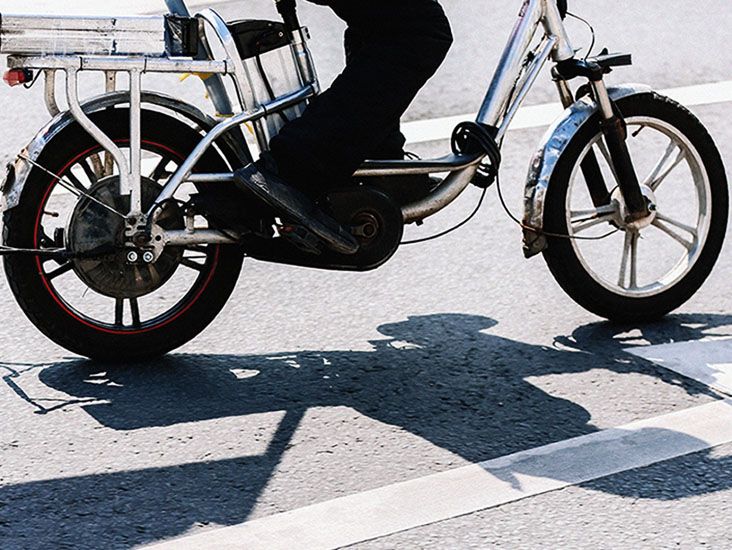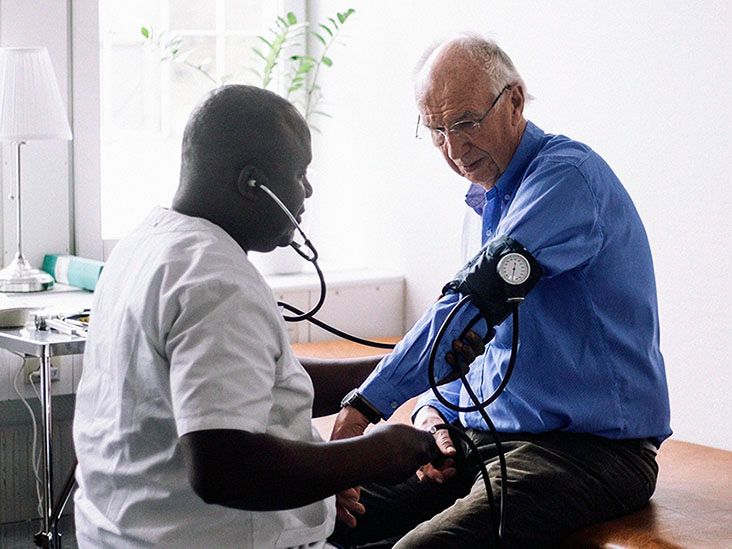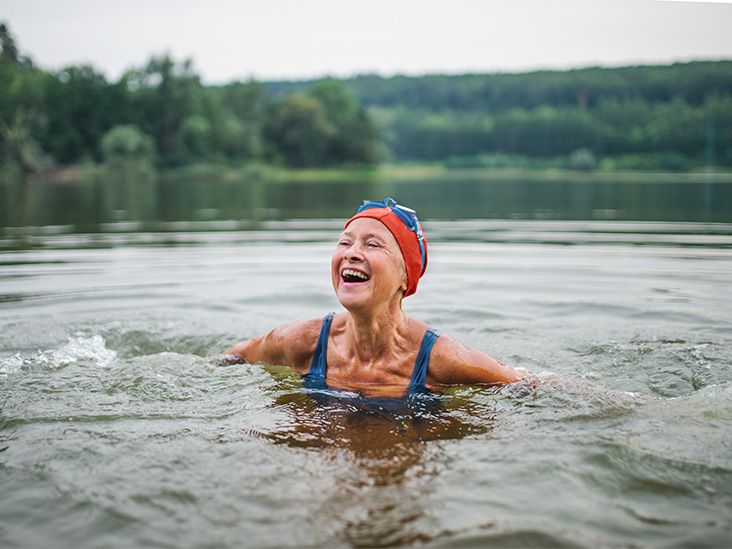Did you know that some of the most effective workouts don't happen in a gym or on a track? They happen right in your local pool. And I'm not talking about splashing around for fun (although that's great too) I'm talking about real, meaningful movement that can transform how you feel every single day.
When you think about staying active as we get older, I know it can feel overwhelming. Maybe your knees ache after walking up stairs, or you're worried about losing your balance. Perhaps you've tried traditional exercises before, only to feel frustrated or even hurt afterward. Trust me, you're not alone in feeling this way.
But here's what I've discovered through working with countless seniors who've found their way back to movement: water is like having your very own personal trainer built into the environment. It's supportive, gentle, and at the same time, surprisingly challenging. Let's dive into why aquatic exercises for seniors might be exactly what you've been looking for.
Why Water Works So Well
Picture this: you're standing in chest-deep water, lifting your leg out to the side. The water wraps around your muscles like a gentle hug, supporting you while still providing resistance. It's like having the perfect workout partner who's always there, never judgmental, and ready to help you succeed.
The magic happens because water has these incredible properties. Its buoyancy takes pressure off your joints something that changes everything if arthritis or joint pain has been limiting you. At the same time, water's density creates natural resistance. Every movement you make becomes a strength-building opportunity, without the strain of weights or hard surfaces.
This makes aquatic therapy for elderly individuals particularly valuable because it addresses two common concerns at once: staying safe while still getting strong. Think about what that means. You can move more freely, with less fear of falling or hurting yourself, while your body is simultaneously working harder than you might realize.
How This Compares to Dry Land
Let's be honest we've all seen someone wince when stepping off a treadmill or doing squats on concrete floors. Land-based exercises have their place, but they come with trade-offs that aquatic workouts simply avoid.
| Feature | Aquatic Exercise | Land-Based Exercise |
|---|---|---|
| Impact on Joints | Minimal | Moderate to High |
| Muscle Resistance | Natural via water drag | Weights or bodyweight |
| Balance Training | High | Varies |
| Risk of Falls/Injury | Lower | Higher if not careful |
What strikes me most about this comparison is how water naturally addresses many seniors' biggest concerns. The reduced risk of injury alone makes it worth considering, especially if you've been hesitant to start exercising again after a period of inactivity.
Health Benefits That Speak Volumes
The benefits of aquatic exercise go far beyond what you might expect. And here's the thing you don't need to become a swimmer or master complicated techniques to experience them. Simple, consistent movements in water can lead to real improvements in your quality of life.
For mobility and joint pain, I've watched people who hadn't climbed stairs without assistance suddenly find themselves doing it with ease after regular water sessions. The anti-inflammatory effects of moving in warm water, combined with the gentle stretching and strengthening, create a powerful combination for relief. This isn't just about feeling better during exercise it's about carrying those improvements into daily life.
Mentally, there's something uniquely calming about being in water. The gentle pressure, the sound of lapping waves, the coolness against your skin it's naturally stress-reducing. When you add the social element of group classes, you're getting a double benefit: physical movement and community connection. Research has actually shown improved mood and cognitive function in older adults after just 28 weeks of aquatic workouts. That's remarkable considering some studies have shown similar or better results than medication for certain aspects of mental health.
Your heart health benefits too, sometimes more than you might expect. Water walking and senior water aerobics can improve cardiovascular fitness in ways that feel surprisingly intense, even though they're gentle on your body. And because water workouts engage your core and breathing, you're getting cardiovascular benefits along with strength training a two-for-one deal that's hard to find elsewhere.
Getting Started with Simple Moves
You don't need to be athletic or have any special skills to begin. These basic exercises will help you ease into aquatic workouts while building confidence and strength.
Walking in the shallow end is exactly what it sounds like but trust me, you'd be surprised how effective it can be. Keep your arms swinging naturally, and gradually increase your pace. This simple action provides cardiovascular benefits while building leg strength and endurance. It's also one of the best ways to warm up before more targeted exercises.
Marching in place takes that walking motion and intensifies it slightly. Instead of moving forward, you're lifting your knees and moving with more control. It's like tap dancing's calmer cousin, giving you core engagement and coordination practice without the complexity of learning choreography.
Wall push-ups are perfect for building upper body strength. Stand facing the pool wall in the shallow end, place your hands on the edge, and perform push-ups against the solid surface. It's much more manageable than traditional push-ups, but still challenges your arms, shoulders, and chest muscles effectively.
Calf raises and leg lifts help improve stability and make everyday activities like climbing stairs easier. These lower body exercises strengthen the muscles you use most, and doing them in water adds resistance while protecting your joints from impact. Always feel free to hold onto the pool edge or wall for balance support that's what it's there for!
For those ready to add some equipment, water weights or hand webs can intensify your workout. Foam dumbbells and hand paddles increase resistance during arm movements, making simple motions more challenging. Noodles and kickboards aren't just fun they're excellent tools for resistance training and support during various exercises.
Class Options That Fit Your Life
One of the most wonderful things about water exercise is the variety of options available. Whether you love the energy of a group or prefer the peace of solo workouts, there's likely a perfect fit for you.
Programs like SilverSneakers Splash offer structured group classes specifically designed for seniors, focusing on full-body movement and joint support. U.S. Masters Swimming provides community-based options that might appeal if you're looking for a slightly more competitive atmosphere. And for those who prefer working out from home, YouTube channels created by physical therapists offer excellent guidance for at-home routines.
| Program | Instructor / Source | Focus Areas |
|---|---|---|
| SilverSneakers Splash | SilverSneakers | Full body + joint support |
| U.S. Masters Swimming | Nationwide community | Competitive-leaning fitness |
| YouTube Channels | @TheSeniorCenteredPT | At-home routines by PTs |
The choice between group classes and solo workouts depends on your personality and lifestyle. If motivation comes from being around others and having accountability, group settings will likely keep you more consistent. But if you value flexibility and comfort, home pool sessions or lap swimming might be your sweet spot. My biggest piece of advice? Don't be afraid to try different options until you find what feels right.
Important Safety Considerations
While aquatic exercises are generally safe and beneficial, it's important to approach them thoughtfully. Deep-water movements require extra caution, especially for those still building confidence and strength. Flotation devices like noodles or inflatable belts can provide security, but deep-water drills should only be attempted with proper supervision and equipment.
Here's something that surprises many people: you can still become dehydrated while exercising in water. Since you don't feel sweaty or overheated, it's easy to forget about drinking fluids. Pay attention to signs of fatigue like dizziness or unexpected shakiness your body is trying to tell you something.
If you're sensitive to chlorine or have skin concerns, remember to rinse off after your sessions. Simple habits like this can prevent irritation and keep you enjoying your workouts longer. Consider wearing a swim cap or goggles if eye or scalp sensitivity is an issue.
Above all, always check with your doctor before starting any new exercise program. This is especially crucial if you're managing conditions like diabetes, heart issues, or respiratory problems. Your healthcare provider knows your medical history and can give you personalized advice about what's safe and beneficial for you specifically.
Gear That Makes a Real Difference
You don't need much to get started, but a few key pieces of equipment can enhance your experience and safety.
Water shoes or sneakers help prevent slipping on pool surfaces and protect your feet from scrapes or bruises. If your facility has particularly smooth floors, these become essential rather than optional.
Flotation devices provide safety for those still building confidence and strength in the water. Whether it's a simple noodle or an inflatable belt, having that extra security can make the difference between enjoying your workout and feeling anxious.
Water weights and gloves add resistance during arm movements, intensifying your workout without adding stress to your joints. These small additions can significantly increase the effectiveness of your sessions.
Finally, don't underestimate the importance of towels and a robe for post-workout comfort. Being able to warm up and dry off properly helps prevent temperature-related issues and makes the entire experience more pleasant.
| Item | Purpose |
|---|---|
| Water shoes/sneakers | Prevent slipping/skin scrapes |
| Flotation devices | Provide safety for those still gaining strength |
| Water weights / gloves | Add resistance during arm movements |
| Towels & robe | Stay warm and dry post-workout |
Your First Steps into the Water
Getting started doesn't have to be complicated or overwhelming. Here's a simple path to follow:
First, choose your pool location carefully. Indoor, heated pools are ideal, especially during colder months. Look for facilities that cater to seniors or offer shallow-end options where you can touch the bottom comfortably.
Talk to your doctor or physical therapist before beginning. This conversation is particularly important if you're managing chronic conditions like arthritis, hypertension, balance disorders, or cardiac history. They might have specific recommendations or restrictions that will keep you safer and more effective in your workouts.
Try a single session of water aerobics before committing to anything. Observe how you feel, what works well, and what might need adjustment. This first experience can tell you a lot about what to expect and whether you're ready for more.
Focus on consistency over intensity, especially at the beginning. Start with 2-3 times per week for 20-30 minutes total. This approach helps prevent burnout while allowing your body to adapt gradually to the new movements and environment.
Monitor your progress by paying attention to subtle changes. Are you feeling steadier on your feet? Do daily activities feel less tiring? Is your mobility improving? These small signs often indicate bigger improvements in your overall health and well-being.
Why This Might Be Your Answer
If movement has become challenging, painful, or simply boring, aquatic exercises for seniors offer a refreshing alternative. They meet you exactly where you are, regardless of your current fitness level or physical limitations.
The beauty of water exercise is how quickly people often see and feel results. Within just a few weeks, many find their balance has improved, their joints feel more flexible, and daily activities become easier. It's not magic it's the natural combination of gentle support, resistance training, and full-body movement.
Better yet, water workouts often surprise people with how enjoyable they can be. There's something almost meditative about moving through water, and many find themselves looking forward to their pool time in ways they never expected.
So here's my question for you: when will you take that first step into the water? Whether it's tomorrow morning or next month, the important thing is making that commitment to your health and well-being.
If you're curious about class options, check whether your Medicare plan includes SilverSneakers benefits, which can open doors to facilities in your area. Or simply grab your swimsuit tonight and commit to one simple water walk tomorrow morning. Sometimes the best decisions are the ones we make right now, rather than waiting for the perfect moment.
Remember, this isn't about becoming an athlete or meeting unrealistic expectations. It's about finding joy in movement again, feeling stronger and more confident, and creating a sustainable routine that enhances your golden years. Water is waiting for you, and I have a feeling you're going to love what it has to offer.
FAQs
What are the best aquatic exercises for beginners?
Beginners can start with shallow water walking, marching in place, wall push-ups, and gentle leg lifts. These movements build strength and confidence without strain.
Is swimming necessary to do water workouts?
No, swimming skills are not required. Many effective aquatic exercises take place in the shallow end where you can stand comfortably and move safely.
How often should seniors do aquatic exercises?
For best results, aim for 2–3 sessions per week, each lasting 20–30 minutes. Consistency is more important than intensity when starting out.
Are water workouts safe for people with arthritis?
Yes, aquatic exercises are ideal for arthritis sufferers due to the buoyancy of water, which reduces joint stress while still providing resistance for muscle strengthening.
Can I do aquatic exercises at home?
Yes, if you have access to a pool at home or locally, you can follow simple routines using basic equipment like noodles, weights, or flotation devices.
Disclaimer: This article is for informational purposes only and does not constitute medical advice. Always consult with a healthcare professional before starting any new treatment regimen.
Related Coverage
Get Medicare Part D plans for 2025, compare costs, formularies, pharmacy networks, and the new out‑of‑pocket cap to save money....
Find out if Medicare electric bikes are covered, what alternatives exist, and how seniors can still get the mobility they need....
Aging is gradual but starts earlier than many realize - around age 30. Understand normal physical and mental changes to expect through middle age and beyond....
Find the right Medicare in Texas with our guide to coverage options, plans, and enrollment tips for Texans....
Get your free Medicare wellness visit every year. No cost, no copay. Stay healthy and catch risks early with this preventive care benefit....
Lose weight without sacrificing flavor. Discover 50 delicious weight loss foods like fruits, vegetables, whole grains, lean proteins, healthy fats and spices....
Find out how the Medicare Part B Give Back can lower your monthly premium, who qualifies, and what to watch for before enrolling....
Wondering which custodial care service is right for you or your family in 2024? Check out our top 5 recommendations, including nursing homes, assisted living, and more. Find the best fit for your loved one's needs....
Knowing the red flags like isolation, mood swings, controlling behavior and fear in toxic relationships can empower you to regain your self-worth and walk away....
Meeting senior nutrition needs helps maintain energy, muscle, and bone health. Learn how to eat right as you age....









